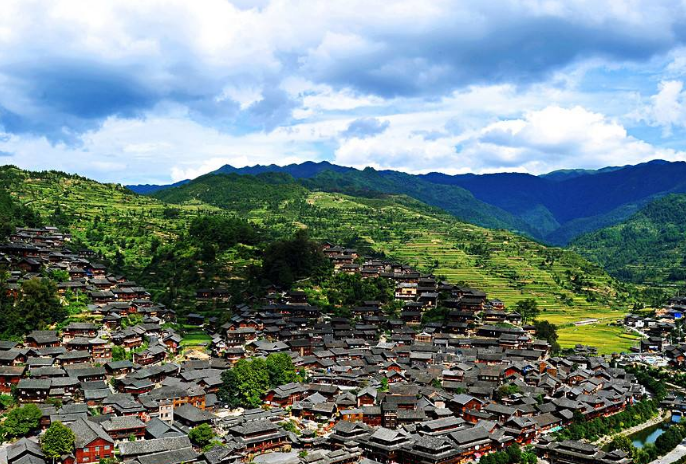
by Xinhua writers Zhang Yiyi and Jiang Cheng
GUIYANG, Nov. 16 (Xinhua) -- Pingtang Bridge in southwest China's Guizhou Province has capped all of its main towers, boasting the highest concrete bridge tower in the world, making the once landlocked province leap at the chance of transportation development.
Located in Bouyei-Miao Autonomous Prefecture of Qiannan, the bridge, a colossal cable-supported viaduct with a span of 2,135 meters, will serve as a major connection on the Pingtang-Luodian Expressway above the Caodu River Canyon.
"With a height of 332 meters, the diamond-shaped main tower in front of us features the world's tallest reinforced concrete bridge tower," said Liu Hao, an engineer with the Guizhou Bridge Construction Group, while pointing to the just-finished towers.
According to Liu, the bridge will be completed and open to traffic by the end of 2019. "We are looking forward to yet another world-class bridge," said Liu.
As the only province without plains in China, Guizhou has achieved many world records by building over 20,000 bridges among its karst mountains. The province now has 46 of the world's 100 tallest bridges and is known as "the museum of world bridges" due to the vast numbers, various types and complex technologies of the bridges built over the decades.
For Liu, the 35-year-old engineer, bridge building has been a family tradition as both his father and grandfather worked on bridge projects.
"I clearly remember when I was the first grader and the teacher asked the class about our future dream jobs. My classmates were saying soldier, scientist and so on. I was the only one who wanted to be a bridge engineer," Liu told Xinhua, addressing his admiration for bridge builders since early childhood.
As a child, Liu spent nearly every summer and winter vacation at the construction site where his father worked. "I visited the Wujiang River Bridge in Zunyi, which was then under construction, with my father when I was in sixth grade. I dreamt of taking part in a magnificent project like that," said Liu.
In 2005, Liu returned to Guizhou after finishing college and the start of his career as a bridge constructor was the 370-meter-high Baling River Bridge, one of the world's highest bridges, with a suspension span of 1,088 meters.
To build a bridge spanning the mountainous Baling River Valley which is over 1,000 meters long and over 300 meters high was no easy task. However, Liu and his team overcame countless technical challenges using several ground-breaking techniques, and the bridge was opened to the public in 2009.
"Bridges in Guizhou have been growing 'taller' and 'faster'," said Liu. "In the past, bridges over 40 meters tall were rarely seen, but now bridges hundreds of meters tall are quite common here."
From Liu's perspective, bridge construction in Guizhou has witnessed multiple changes over the past decades, including a larger variety of bridge types, shorter construction periods and improved technologies.
Liu recalled that his father and grandfather seldom went back home during a bridge project, as construction in the mountains in the past could take five years or more. Nowadays, a gigantic project like Pingtang Bridge takes about three years to complete, and many smaller ones only take several months.
Now, almost every type of bridge can be found in Guizhou, and bridge-building technologies are becoming more efficient with standard processes instead of exploration from scratch, said Liu.
Through bridge building, mountainous Guizhou is becoming deeply integrated with the nation's transportation network with local residents seeing an improved quality of life.
Pingtang Bridge, for instance, is expected to cut the travel time between the canyon by at least an hour. "Deep gorges are becoming thoroughfares," said Liu.




 A single purchase
A single purchase









